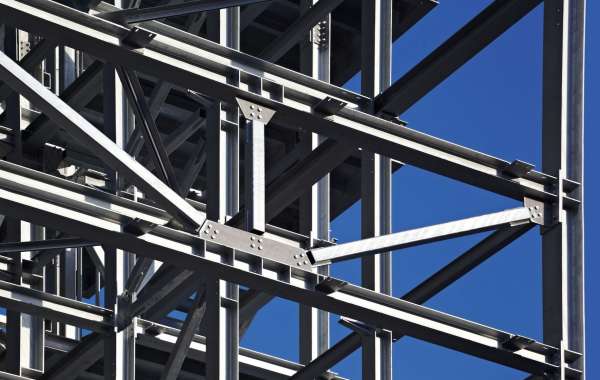The construction industry has evolved dramatically in the past few decades, with advanced technologies, sophisticated designs, and ambitious architectural projects becoming the new norm. At the heart of these modern marvels lies structural steel, the backbone of skyscrapers, bridges, factories, and infrastructure around the world. But no matter how strong steel is as a material, it is only as reliable as the planning that goes into its use. This is where steel detailing services and structural steel detailing come into play.
Steel detailing ensures that every steel component be it a beam, column, truss, or joint—is designed, fabricated, and erected with pinpoint accuracy. Without it, even minor errors could lead to costly rework, safety hazards, or catastrophic structural failures.
In this article, we’ll dive deep into what steel detailing services are, why structural steel detailing is critical for today’s construction projects, and how leveraging professional detailers improves safety, efficiency, and cost savings.
What Are Steel Detailing Services?
Steel detailing services involve the creation of comprehensive drawings and plans that guide the fabrication and erection of steel structures. These detailed blueprints are prepared by expert steel detailers using specialized software such as AutoCAD, Tekla Structures, and Revit.
A steel detailer translates architectural and structural engineering designs into precise shop drawings for fabricators and erection drawings for contractors on-site. The process covers:
- Shop Drawings: Detailed diagrams for fabrication, showing dimensions, materials, welding details, and bolts.
- Erection Drawings: Layouts for on-site assembly, showing the exact location of every steel component.
- BOM (Bill of Materials): A list of materials required, including type, grade, and quantity of steel.
These deliverables ensure seamless collaboration between engineers, architects, fabricators, and contractors, making steel detailing a cornerstone of modern construction.
Why Structural Steel Detailing Matters
1. Accuracy and Safety
Structural steel detailing ensures that every beam, column, and truss is fabricated and installed exactly as intended. Since construction involves working with heavy loads and high-risk environments, a single miscalculation can lead to dangerous outcomes. Accurate detailing eliminates ambiguity and guarantees worker and structural safety.
2. Cost Efficiency
Errors in steel fabrication or miscommunication during erection can be incredibly expensive to fix. Structural steel detailing minimizes waste, prevents delays, and reduces the risk of costly rework by providing precise, error-free instructions.
3. Faster Project Delivery
In large-scale construction, time is money. Detailed shop and erection drawings streamline the fabrication and assembly process, reducing project delays and ensuring timely completion.
4. Compliance with Standards
The construction industry is governed by strict codes and regulations such as AISC (American Institute of Steel Construction), ASTM, BS (British Standards), and Eurocode. Structural steel detailing ensures compliance with these international standards, protecting companies from legal liabilities.
5. Supporting Modern Architecture
Today’s buildings and infrastructure projects often feature complex and innovative designs. Steel detailers use 3D modeling and Building Information Modeling (BIM) to bring these designs to life while ensuring constructability and safety.
Applications of Steel Detailing Services
Steel detailing services are used in a wide range of industries, including:
- Commercial Construction: High-rise office towers, shopping malls, and corporate buildings.
- Industrial Projects: Warehouses, factories, and power plants requiring robust steel frameworks.
- Infrastructure: Bridges, airports, stadiums, and railway stations.
- Residential Projects: Villas, multi-story apartments, and gated communities.
- Energy Sector: Oil & gas refineries, wind turbines, and renewable energy plants.
Every sector depends on structural steel detailing to ensure that steel frameworks are not just strong but also cost-effective and safe.
Advantages of Professional Steel Detailing Services
- Enhanced Collaboration: Facilitates smooth coordination between engineers, architects, and fabricators.
- 3D Modeling & BIM Integration: Detects design clashes early, reducing costly rework.
- Reduced Material Wastage: Optimized detailing minimizes unnecessary cutting and scrap.
- Improved Workflow Efficiency: Well-prepared drawings streamline both fabrication and erection.
- Global Outsourcing Benefits: Many companies outsource detailing services to specialized firms for cost-effective and timely delivery.
Technology in Structural Steel Detailing
Modern steel detailing is powered by advanced technologies that enhance accuracy and efficiency.
- AutoCAD & Tekla Structures: Used for 2D/3D detailing and error-free fabrication drawings.
- Revit & BIM (Building Information Modeling): Enable real-time collaboration, clash detection, and lifecycle management of structures.
- Cloud-Based Platforms: Allow global teams to collaborate seamlessly, improving productivity.
The integration of these technologies ensures that steel detailing services remain aligned with the growing demand for complex, large-scale projects.
Challenges in Structural Steel Detailing
While steel detailing offers many advantages, it also comes with challenges:
- Maintaining strict accuracy across thousands of components.
- Coordinating with architects, engineers, and contractors to resolve design conflicts.
- Keeping up with international codes and ever-evolving industry standards.
- Managing deadlines for large-scale projects with tight schedules.
Professional detailing companies overcome these challenges through skilled teams, advanced tools, and rigorous quality control processes.
Real-World Example
Consider a modern suspension bridge project where thousands of steel components are required. Without structural steel detailing, fabricators would struggle to manufacture beams and trusses of the correct dimensions. Erectors might face misalignment during assembly, leading to project delays or safety hazards.
With professional detailing services, each component is clearly defined, fabricated accurately, and installed seamlessly. This precision not only saves time and money but also ensures the long-term durability of the structure.
Conclusion
In the ever-evolving construction landscape, steel detailing services have become indispensable. From ensuring precision in fabrication to improving safety on construction sites, structural steel detailing plays a critical role in every project’s success. By providing accurate drawings, reducing costs, and ensuring compliance with global standards, it enables architects and engineers to bring ambitious designs to life.







